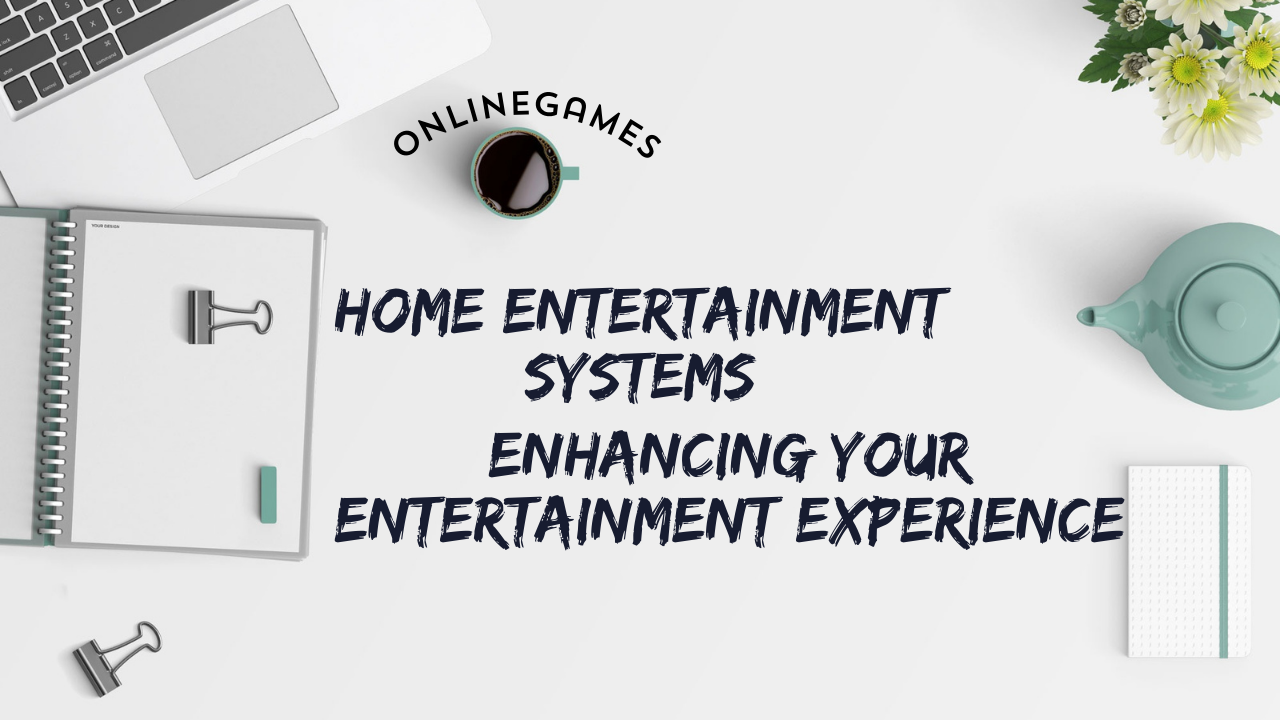In today’s digital age, home entertainment systems have evolved from simple setups to sophisticated multimedia hubs that cater to diverse preferences and technologies. Whether you’re a movie enthusiast, a music lover, or a gaming aficionado, a well-designed home entertainment system can transform your living space into a cinematic or immersive experience. This guide explores the essential components, setup considerations, and latest trends in home entertainment systems to help you create your ultimate entertainment haven.
Components of a Home Entertainment System
A typical home entertainment system comprises several key components that work together to deliver high-quality audio and visual experiences:
1. Television (TV) or Projector
The centrepiece of any home entertainment system is the display device. You can choose between a high-definition television (TV) or a projector, depending on your space and viewing preferences. TVs range from compact LED screens to expansive OLED or QLED displays, offering sharp visuals and vibrant colours. Projectors, on the other hand, provide a larger viewing area, making them ideal for dedicated home theatre rooms.
2. Audio System
Audio quality is crucial for an immersive entertainment experience. Options include:
- Soundbars: Compact and easy to install, soundbars provide enhanced audio compared to built-in TV speakers.
- Home Theater Systems: These include multiple speakers (front, centre, surround, and subwoofer) for a true surround sound experience.
- Wireless Speakers: For flexibility in placement without the need for complex wiring.
3. Media Players and Streaming Devices
Media players and streaming devices allow you to access digital content from various sources:
- Streaming Sticks: Devices like Roku, Amazon Fire Stick, or Google Chromecast enable streaming services directly to your TV.
- Blu-ray Players: For high-definition movie playback and sometimes even streaming capabilities.
- Gaming Consoles: Devices like PlayStation or Xbox can serve as media players for gaming, streaming, and Blu-ray playback.
4. Source Devices
These include devices that provide content to your entertainment system:
- Cable or Satellite Box: For live TV and premium channels.
- Streaming Services: Netflix, Hulu, Disney+, and others offer a vast library of movies, TV shows, and original content.
- Personal Media Servers: Store and access your digital media library, including movies, music, and photos.
Setting Up Your Home Entertainment System
1. Determine Your Space and Layout
Choose a room or area in your home that accommodates your entertainment system:
- Room Size: Consider the dimensions of the room for optimal viewing and sound quality.
- Seating Arrangement: Arrange seating to ensure everyone has a clear view of the screen and optimal audio experience.
2. Positioning Your TV or Projector
- TV Placement: Mount on a wall or place on a sturdy stand at eye level for comfortable viewing.
- Projector Setup: Install a projector screen or use a blank wall for projection, ensuring proper distance and alignment.
3. Audio System Setup
- Speaker Placement: Follow manufacturer guidelines for placing front, centre, surround, and subwoofer speakers to achieve balanced sound distribution.
- Calibration: Use the built-in calibration tools or external audio calibration systems to optimize sound settings based on your room acoustics.
4. Connecting and Integrating Devices
- HDMI and Audio Cables: Connect devices using high-quality HDMI cables for video and audio signals. Use optical or coaxial cables for digital audio connections.
- Wireless Connectivity: Utilize Wi-Fi or Bluetooth for connecting wireless speakers and streaming devices to reduce cable clutter.
Latest Trends in Home Entertainment Systems
1. Smart Home Integration
- Voice Control: Integration with virtual assistants like Amazon Alexa or Google Assistant for hands-free operation.
- Smart Lighting and Ambiance: Syncing with smart lighting systems to create immersive viewing experiences.
2. High Dynamic Range (HDR) and 4K/8K Resolution
- HDR Technology: Enhances contrast and colour accuracy for vivid and lifelike visuals.
- 4K and 8K Resolution: Ultra-high definition resolutions provide sharper images and more detail, especially on larger screens.
3. Streaming and On-Demand Content
- Original Content: Streaming platforms producing exclusive movies and TV shows, offering diverse entertainment options.
- Live Streaming: Access to live events, sports, and concerts directly through streaming services.
Investing in a well-designed home entertainment system not only enhances your entertainment options but also creates a cosy and enjoyable environment for family gatherings and personal relaxation. Whether you’re setting up a dedicated home theatre or upgrading your living room setup, understanding the components, setup considerations, and latest trends ensures you make informed decisions for an unparalleled entertainment experience.










